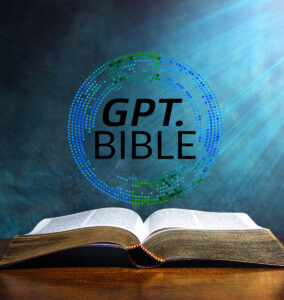Introduction and Key Words
The word liturgy, derived from the technical term in ancient Greek (Greek: λειτουργία), leitourgia, which literally means “work for the people” is a literal translation of the two words “litos ergos” or “public service”. Liturgy is the customary public ritual of worship performed by a religious group. Liturgy can also be used to refer specifically to the public worship of Christians. As a religious phenomenon, liturgy represents a communal response to and participation in the sacred through activities reflecting praise, thanksgiving, remembrance, supplication, or repentance. It forms a basis for establishing a relationship with God. Technically speaking, liturgy forms a subset of ritual. The word liturgy, sometimes equated in English as “service”, refers to a formal ritual enacted by those who understand themselves to be participating in action with the divine. (source: Wikipedia)
James Edwards notes that the Greek of Matthew, as compared to the other Gospels, is clean and consistent, and his style and wording rarely need to be (or can be) improved and that it is apparent that the Gospel of Matthew has been passed through numerous editorial filters. His summation is that “the result is a Gospel that affords memorization and is eminently suitable for public reading” (James Edwards, The Hebrew Gospel, p.248).
Powell also observed that Matthew presents a more developed Christology than does Mark or Luke. This is evidenced by Matthew’s use of terms such as Son of Abraham, Son of David, Son of God, Emmanuel, Prophet, Christ, Son of Man, and the Coming One. The greater frequency of these titles in Matthew as compared to Mark or Luke is an indication that Matthew is the latter and most developed of the three.
Further evidence of this is the Greek word used for worship, which occurs 52 times in Matthew, but only 10 times in Luke and 5 times in Mark. Matthew exhibits a sophisticated implicit Christology in that Jesus is overwhelmingly made the object of this verb, which results in an implicit indication of divine status being applied to him. There is no reasonable explanation why Luke, who shows Hebraisms in his Gospel, would omit such a term if he were drawing on the Matthew of canon as one of his sources. (James Edwards, The Hebrew Gospel, p.248).

This is clear evidence of Matthean Posteriority, which is augmented by many other observations including that of Matthew representing positions on women, sinners, tax collectors, lawless people, wealth, and possessions that reflect a time period later than the Gospel of Luke. (H. P. West Jr., “A primitive Version of Luke in the Composition of Matthew,” pp. 80-88).
Furthermore, Scholarship has observed how Matthew is designed for homiletics (sermons) and liturgical use. In terms of Homiletics, the art of preaching, Matthew consolidates the words of Jesus in various sections and is structured to facilitate preaching as opposed to being a chronological historical narrative. Homiletics comprises the study of the composition and delivery of religious discourses. It includes all forms of preaching: sermons, homilies, and catechetical instruction. It may be further defined as the study of the analysis, classification, preparation, composition, and delivery of sermons. The word homiletic is used to describe something that relates to homiletics and thus can be applied to Matthew in association with its liturgical qualities.
The Liturgical Character of Matthew
G.D. Kilpatrick, The Origins of the Gospel According to St. Matthew, Bolchazy-Carducci Publishers, 2007 (Originally published 1946 Oxford)
Archive Book Link: https://archive.org/details/in.ernet.dli.2015.99535/page/n3/mode/2up
Amazon Link: https://amzn.to/3pxllmu
The Liturgical Background
The evidence also shows that the Church, just as much as the Hellenistic synagogue, practiced considerable liberty in deciding what was to be read, and much that was later rejected from the Canon of Scripture was read without any qualms at an earlier date. Indeed, an apostolic name was not regarded as necessary to commend a book to the ears of the faithful, and the epistles of Clement, Ignatius, and Polycarp, as well as the Shepherd of Hermas, were accepted, through their true authors was known. On the other hand, 2 Peter, Barnabas, the Gospel and Apocalypse of Peter show by their ascriptions that the value of an apostolic name was realized. (p. 65)
The use in the liturgy was the most universal, as it reached both the members of the Church and interested pagans. In contrast to this, the other activities in which the gospel material found a use were limited and departmental. This is clearly true of the employment of the Gospel in missionary work, in the instruction of the interested and the catechumens, in its controversial activities, and in its task of building up a corporate rule and law. Further, in the liturgical use of Scripture these other aspects of the Church’s use of the material were focused. The combination of reading and sermon permitted a missionary turn to be given to the practice, or an instructional or a controversial, or a legislative. It is for reasons of this kind that we may feel justified in ascribing the greatest importance to the liturgical practice of the Church in the early history of the gospel material. (p.67)
It was natural that, in a revised gospel book produced for the worship of the Church, the needs and convenience of liturgical practice should be consulted. This was necessary since Mark, for example, for all its excellences, is not an ideal book for liturgical use. As a revised gospel book, it would also show the influence of some twenty years’ exposition of its sources. In particular, the use of quotations, the grouping of material, and rephrasing would be consequent upon this activity. Some of the changes are only in matters of detail, but the results as a whole are considerable. (p. 70)
Other consequences of this thesis that Matthew is a revised gospel book will come to light as the thesis itself is tested by the evidence. The important thing, once the thesis has been advanced, is to discover how far it provides a satisfactory explanation of features which cannot be explained by source criticism or by a reference to editorial activity, and how far other features come to light which accord with our liturgical hypothesis. (p. 71)

